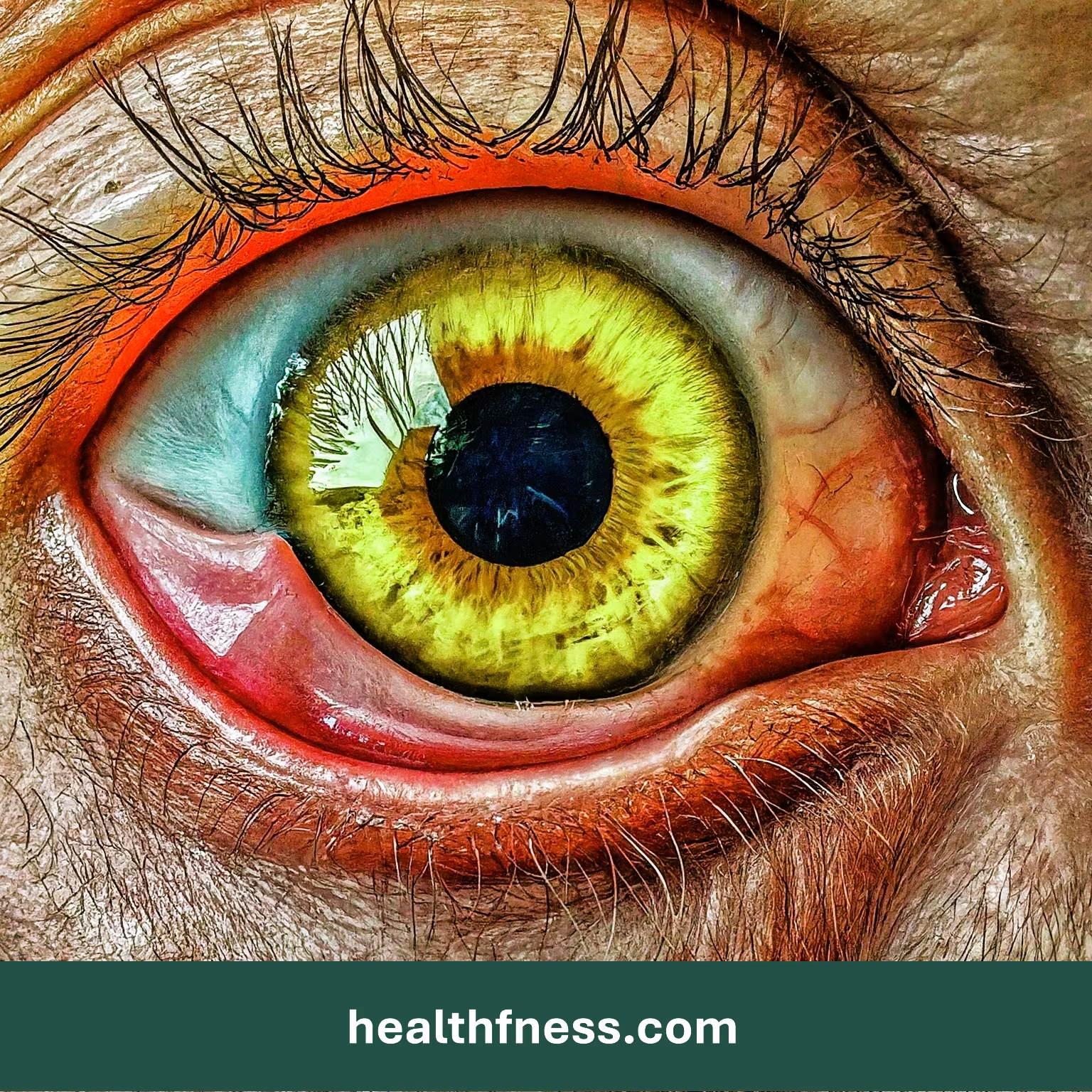Your vision is your window to the world, and at the center of that window is the cornea, the clear, dome-shaped front surface of your eye. For your vision to be sharp and clear, your cornea must remain transparent. But what happens when it becomes swollen and cloudy? This condition, known as corneal edema, can significantly impact your sight and daily life. It’s more than just an inconvenience; it can be a sign of an underlying health issue that needs attention.
Understanding corneal edema is the first step toward finding relief and protecting your precious eyesight. In this comprehensive guide, we’ll explore what causes this corneal swelling, how to recognize its symptoms, and the full spectrum of modern treatments available from simple eye drops to groundbreaking surgical techniques. Our goal is to provide you with authoritative, clear, and helpful information to navigate this condition with confidence.
What Exactly Is Corneal Edema? An In-Depth Overview
Corneal edema is the medical term for the swelling of the cornea due to excess fluid retention. To understand why this happens, it helps to know a little about the cornea’s structure. The cornea is made of five distinct layers, each with a specific job. The innermost layer, called the endothelium, is crucial for maintaining clarity.
Think of the endothelium as a sophisticated pump system. This single layer of cells works constantly to pump fluid out of the cornea, keeping it at the perfect level of hydration, thin and transparent. When the endothelial cells are damaged or their numbers decrease, this pump system starts to fail. Fluid that should be pumped out begins to accumulate within the cornea’s middle layer (the stroma), causing it to swell, thicken, and become hazy or opaque. This fluid buildup is what we call corneal edema, and it’s what leads to blurry, cloudy vision.
Causes and Background: Why Does the Cornea Swell?
Corneal edema isn’t a disease in itself but rather a consequence of another condition, injury, or problem. The causes are diverse, ranging from genetic predispositions to complications from surgery. Understanding the root cause is critical for determining the most effective treatment.
Genetic and Hereditary Conditions
Some people are born with a predisposition to corneal problems that can lead to edema.
- Fuchs’ Endothelial Corneal Dystrophy: This is one of the most common causes of corneal edema, particularly in people over 50. It’s a progressive, inherited condition where the endothelial cells slowly deteriorate over a person’s lifetime. As the cells die off, the pumping mechanism weakens, leading to chronic corneal swelling.
- Posterior Polymorphous Corneal Dystrophy (PPCD): A rarer genetic disorder that affects the endothelium, sometimes causing swelling and other changes in the cornea.
- Chandler’s Syndrome: Part of a group of disorders known as iridocorneal endothelial (ICE) syndrome, this condition involves the abnormal growth of endothelial cells, which can block fluid drainage and lead to both glaucoma and corneal edema.
Complications from Eye Surgery
Any surgery inside the eye can potentially damage the delicate endothelial cells. While surgeons take extreme care, sometimes swelling can occur post-operatively.
- After Cataract Surgery: This is a common cause. During cataract surgery, instruments and fluids inside the eye can cause stress to the endothelium. Most of the time, this swelling is temporary and resolves within days or weeks. However, if a patient has a pre-existing low endothelial cell count (like in early Fuchs’ dystrophy), the surgical stress can be enough to push the cornea into a state of chronic edema. This is sometimes called pseudophakic bullous keratopathy.
- After Glaucoma or Retinal Surgery: Similar to cataract surgery, these procedures can also traumatize the endothelial cells and lead to swelling.
Inflammation, Infection, and Autoimmune Diseases
Inflammation inside the eye can disrupt the normal function of the cornea.
- Endotheliitis: This is a direct inflammation of the endothelial layer, often caused by a viral infection like Herpes Simplex Virus (HSV) or Cytomegalovirus (CMV). The inflammation prevents the cells from pumping effectively.
- Keratitis and Uveitis: Inflammation of the cornea (keratitis) or the middle layer of the eye (uveitis) can also lead to secondary corneal edema.
- Autoimmune Disorders: Conditions like rheumatoid arthritis can cause inflammatory responses in the eye that may affect the cornea.
Trauma and Eye Injury
A direct blow to the eye or a penetrating injury can cause immediate and significant damage to all layers of the cornea, including the endothelium, leading to acute swelling.
Other Medical Factors
- Glaucoma: Very high pressure inside the eye can physically stress the cornea and contribute to fluid buildup.
- Medications: Certain drugs, such as amantadine (used for Parkinson’s disease) and some chemotherapy agents, have been linked to corneal edema.
- Contact Lens Issues: Over-wearing contact lenses, especially older, less breathable types, can deprive the cornea of oxygen and lead to temporary swelling.
Recognizing the Signs: Common Symptoms of Corneal Edema
The symptoms of corneal edema can range from subtle to severe, depending on the extent of the swelling. A key characteristic is that symptoms are often worse upon waking.
This is because during sleep, the eyes are closed, and the tears cannot evaporate from the corneal surface. This higher-humidity environment reduces the natural outward pull of fluid, allowing more to accumulate overnight. Once you are awake and your eyes are open, the evaporation helps clear some of the fluid, and vision may improve throughout the day.
Primary Symptoms to Watch For:
- Blurry or Cloudy Vision: This is the most common symptom. It might feel like you’re looking through a fog or steamy window.
- Halos Around Lights: The excess fluid in the cornea can scatter light as it enters the eye, causing you to see halos or starbursts, especially around headlights at night.
- Eye Pain and Discomfort: As the edema worsens, the cornea’s outer layer (the epithelium) can form tiny, painful blisters called bullae. When these blisters rupture, it can cause sharp pain and a feeling that something is in your eye (foreign body sensation). This advanced stage is known as bullous keratopathy.
- Sensitivity to Light (Photophobia): The cloudiness of the cornea can make bright lights uncomfortable or even painful.
When to See an Eye Doctor Immediately
While gradual blurriness warrants a scheduled appointment, you should seek immediate medical attention from an ophthalmologist if you experience:
- Sudden, severe eye pain
- Abrupt and significant vision loss
- Visible blisters on the surface of your eye
The Diagnostic Process: How Doctors Identify Corneal Edema
Diagnosing corneal edema requires a comprehensive eye examination by an ophthalmologist. The doctor will use specialized equipment to get a detailed look at your cornea and determine the underlying cause.
- Patient History: Your doctor will ask about your symptoms, when they started, your family medical history (especially regarding eye conditions like Fuchs’ dystrophy), and any past eye surgeries or injuries.
- Visual Acuity Test: A standard eye chart test will measure how well you can see at various distances.
- Slit-Lamp Examination: This is the most important tool. A slit lamp is a high-power microscope that allows the doctor to examine every layer of your cornea in detail. They can see signs of swelling, haze, and look for tiny folds in the back layers of the cornea (Descemet’s membrane) that indicate edema.
- Pachymetry: This test measures the thickness of your cornea. A thicker-than-normal cornea is a definitive sign of edema. This measurement is crucial for tracking the progression of the condition over time.
- Specular Microscopy: This advanced imaging technique allows your doctor to see the endothelial cells themselves. They can assess the cell density (how many cells are in a given area), size, and shape. A low cell count or irregular cell shapes can confirm a diagnosis like Fuchs’ dystrophy and help predict the cornea’s long-term health.
Risks and Complications If Left Untreated
Ignoring corneal edema can lead to serious and sometimes irreversible consequences for your vision and eye health.
- Progressive and Permanent Vision Loss: Chronic swelling can eventually lead to scarring of the cornea, which causes permanent cloudiness that cannot be corrected with glasses.
- Bullous Keratopathy: As mentioned, this is a painful condition where blisters form on the eye’s surface. These can rupture, causing severe pain and creating an open sore that is highly susceptible to infection.
- Increased Risk of Infections: A swollen, compromised cornea is a much weaker barrier against bacteria and viruses, increasing the risk of serious corneal infections (infectious keratitis).
- Chronic Pain: The constant discomfort, foreign body sensation, and pain from ruptured bullae can significantly decrease one’s quality of life.
Latest Studies and Modern Treatment Approaches
Treatment for corneal edema is tailored to its cause and severity. The field has seen remarkable advancements, moving from basic symptom management to restorative and regenerative therapies.
Non-Surgical Treatments for Mild to Moderate Edema
The first line of defense often involves conservative measures to reduce swelling and manage symptoms.
- Hypertonic Saline Solutions: These are special salt-based eye drops and ointments (such as Muro 128). The high salt concentration works by osmosis, drawing excess fluid out of the cornea and providing temporary clarity. They are often used multiple times a day, with the ointment form being particularly helpful at bedtime.
- Medications to Lower Eye Pressure: If high intraocular pressure (glaucoma) is a contributing factor, your doctor will prescribe drops to lower the pressure and reduce stress on the cornea.
- Corticosteroid Eye Drops: In cases where inflammation (like endotheliitis or uveitis) is the cause, steroid drops are used to calm the inflammation, which in turn allows the endothelial cells to function better and reduce swelling.
- Bandage Contact Lenses: These are thin, soft, highly breathable contact lenses that are not for vision correction. Instead, they act as a protective shield over the cornea to relieve the pain caused by ruptured blisters in bullous keratopathy and promote healing.
Latest Research and Emerging Therapies
The most exciting developments are focused on regenerating or replacing only the damaged endothelial cells, avoiding the need for a full transplant. A 2022 review in the Journal of Clinical Medicine highlighted the immense potential of these new approaches.
- Rho-kinase (ROCK) Inhibitor Eye Drops: This is a revolutionary area of research. ROCK inhibitors, such as Ripasudil, have been shown to promote the proliferation and migration of remaining healthy endothelial cells. A 2023 study published in Cornea demonstrated that these drops could successfully reverse corneal edema in some patients after eye surgery, potentially eliminating the need for a transplant. This is a significant shift from merely managing symptoms to actively promoting healing at a cellular level.
- Corneal Endothelial Cell Injection Therapy: Instead of transplanting a layer of tissue, this cutting-edge technique involves growing healthy donor endothelial cells in a lab and then injecting them directly into the patient’s eye. These cells then attach to the back of the cornea and begin pumping fluid. Early clinical trials have shown remarkable success, and this could become a primary treatment for Fuchs’ dystrophy in the near future.
Advanced Surgical Treatments for Severe Edema
When vision is significantly impaired and non-surgical treatments are no longer effective, surgery is the definitive solution. Modern corneal surgery has become incredibly precise, focusing on replacing only the diseased part of the cornea.
- Descemet’s Stripping Endothelial Keratoplasty (DSEK or DSAEK): In this procedure, the surgeon removes the patient’s damaged endothelial layer and Descemet’s membrane and replaces it with a thin piece of donor tissue containing a healthy endothelium. An air bubble is placed in the eye to hold the new tissue in place. Recovery is much faster, and vision is better than with a traditional full-thickness transplant.
- Descemet’s Membrane Endothelial Keratoplasty (DMEK): This is an even more advanced and delicate version of DSEK. The donor tissue transplanted is extremely thin, consisting of just the endothelial cells and their membrane, no extra stromal tissue. DMEK offers the fastest visual recovery, the best possible vision, and the lowest risk of graft rejection. It has become the gold standard for treating corneal edema caused by endothelial dysfunction, like Fuchs’ dystrophy. A 2024 meta-analysis in the American Journal of Ophthalmology confirmed that DMEK provides superior visual outcomes compared to DSEK for most patients.
- Penetrating Keratoplasty (PK): This is the traditional, full-thickness corneal transplant. The entire central portion of the cloudy cornea is removed and replaced with a full-thickness donor cornea, which is then stitched into place. This surgery is now reserved for cases where the entire cornea is scarred or misshapen, not just the endothelial layer.
Comparison of Modern Corneal Transplant Surgeries
Choosing the right surgery depends on the specific condition of your cornea. Here is a table to help understand the differences between the primary surgical options.
| Feature | Penetrating Keratoplasty (PK) | Descemet’s Stripping Endothelial Keratoplasty (DSEK) | Descemet’s Membrane Endothelial Keratoplasty (DMEK) |
|---|---|---|---|
| Tissues Replaced | Full corneal thickness (all layers) | Posterior layers (Endothelium, Descemet’s membrane, thin layer of stroma) | Innermost layers only (Endothelium and Descemet’s membrane) |
| Incision Size | Large, circular incision | Small (3-5 mm) | Very Small (2-3 mm) |
| Visual Recovery Time | Slow (6-12+ months) | Moderate (1-6 months) | Fast (1 week to 3 months) |
| Typical Visual Outcome | Good, but often with high astigmatism requiring glasses/contacts | Very Good (often 20/30 to 20/40) | Excellent (often 20/25 or better) |
| Risk of Rejection | Highest | Low | Lowest (<1%) |
| Ideal Candidate | Patients with deep corneal scarring or severe structural problems | Patients with endothelial disease; good option for complex eyes | Patients with endothelial disease (e.g., Fuchs’) and an otherwise healthy cornea |
Practical Tips for Managing Corneal Edema
Living with corneal edema, especially while waiting for treatment, involves managing symptoms to maintain your quality of life.
- The Hair Dryer Technique: Some doctors recommend a simple trick for clearing morning fogging faster. Holding a hair dryer at arm’s length on a cool, low setting and blowing the air across your face (not directly into your eyes) for a minute can help evaporate moisture from the corneal surface. Important: You must consult your eye doctor before trying this to ensure you do it safely.
- Stay Consistent with Medications: Use your hypertonic saline drops and any other prescribed medications exactly as directed. Consistency is key to managing the swelling.
- Protect Your Eyes: Wear sunglasses that block 100% of UVA and UVB rays when outdoors. This can help with light sensitivity and protect your overall eye health.
- Follow-Up Diligently: Attend all your scheduled follow-up appointments. Your doctor needs to monitor your corneal thickness and cell count to make timely decisions about your treatment.
- Support Overall Eye Health: While no specific diet cures corneal edema, a diet rich in antioxidants like vitamins C and E, lutein, and zeaxanthin can support the health of all your eye tissues. Stay well-hydrated by drinking plenty of water.
Frequently Asked Questions (FAQs)
Can corneal edema be cured permanently?
In some cases, yes. If the edema is caused by a temporary issue like inflammation, infection, or post-surgical swelling, it can resolve completely once the underlying cause is treated. For chronic, progressive conditions like Fuchs’ dystrophy, the “cure” is a corneal transplant (like DMEK or DSEK), which replaces the dysfunctional cells and can provide clear vision for many years or even a lifetime.
How long does it take for corneal edema to go away?
The timeline varies greatly. Post-surgical swelling might clear up in a few days to weeks. Edema from an infection will improve as the infection is treated. For chronic conditions, the edema will not go away on its own and typically worsens slowly over time until surgery is performed.
Is it possible to prevent corneal edema?
You cannot prevent genetic conditions like Fuchs’ dystrophy. However, you can reduce your risk of other causes by:
- Wearing protective eyewear during sports or hazardous activities to prevent injury.
- Practicing proper contact lens hygiene to avoid infections.
– Attending regular comprehensive eye exams, which can detect conditions like glaucoma or early signs of Fuchs’ dystrophy before they become severe.
Is corneal edema a serious condition?
Yes, it can be very serious. If left untreated, it can lead to significant pain, permanent vision loss, and complications like corneal scarring and infections. Prompt diagnosis and management by an ophthalmologist are essential.
What is the best eye drop for corneal edema?
The most common and effective non-prescription drops are hypertonic saline solutions, such as Muro 128 5% drops and ointment. They work by drawing fluid out of the cornea. However, your doctor may also prescribe steroid drops for inflammation or medications for glaucoma, depending on the cause. Always follow your doctor’s specific recommendation.
Are there any natural treatments for corneal edema?
There are no scientifically proven “natural cures” that can reverse endothelial cell loss or fix a damaged cornea. Lifestyle choices like a healthy diet and staying hydrated support overall eye health, but cannot treat the underlying causes of chronic corneal edema. The “hair dryer” technique is a physical aid, not a biological treatment. It is crucial to rely on medical treatments recommended by an ophthalmologist.
Conclusion: Taking Control of Your Corneal Health
Corneal edema can be a daunting diagnosis, but advances in ophthalmology have transformed its treatment landscape. From effective symptom management with specialized eye drops to minimally invasive surgeries like DMEK that can fully restore vision, there is more hope than ever before. Understanding the condition is the first step, and recognizing the symptoms early is crucial.
If you are experiencing blurry vision, halos, or eye discomfort, don’t wait. Schedule an appointment with an eye care professional. With an accurate diagnosis and a personalized treatment plan, you can protect your sight and look forward to a future of clear vision.
References
- National Eye Institute (NEI). “Cornea and Corneal Disease.” https://www.nei.nih.gov/learn-about-eye-health/eye-conditions-and-diseases/cornea-and-corneal-disease
- American Academy of Ophthalmology (AAO). “What Is Fuchs’ Dystrophy?” https://www.aao.org/eye-health/diseases/what-is-fuchs-dystrophy
- Mayo Clinic. “Corneal Edema.” https://www.mayoclinic.org/ (General information on symptoms and causes).
- Vedana, G., et al. (2022). “Corneal Endothelial Dystrophies: An Updated Review of Medical and Surgical Treatments.” Journal of Clinical Medicine. https://www.ncbi.nlm.nih.gov/pmc/articles/PMC8910408/
- Okumura, N., et al. (2023). “Rho Kinase Inhibitor Eye Drops for the Treatment of Corneal Endothelial Dysfunction.” Cornea. (Link to abstract on PubMed)
- Droutsas, K., et al. (2024). “Visual Acuity Outcomes after DMEK versus DSEK for Fuchs Endothelial Corneal Dystrophy: A Meta-Analysis.” American Journal of Ophthalmology. (Link to abstract on PubMed)

Dr. Mark Jenkins, MD - General Physician (California, USA)
Dr. Mark Jenkins is a board-certified general physician based in the United States, specializing in preventive medicine, nutrition, and lifestyle health. With years of clinical experience in primary care, he is dedicated to helping patients and readers alike make informed, science-based decisions about their well-being.
As a trusted medical reviewer and contributor to Healthfness.com, Dr. Jenkins ensures that all health content meets the highest standards of accuracy, safety, and evidence-based medicine. His expertise bridges modern medical science with practical, everyday wellness strategies, making complex topics approachable for all audiences.
Outside the clinic, Dr. Jenkins is passionate about living the healthy lifestyle he teaches. He enjoys hiking with his dog, experimenting with vegetarian cooking, and exploring the latest health research. He believes that small, consistent lifestyle changes lead to lasting health improvements, and he aims to inspire readers to take proactive steps toward a healthier, happier life.
Explore more of Dr. Jenkins’ evidence-based insights at Healthfness.com



